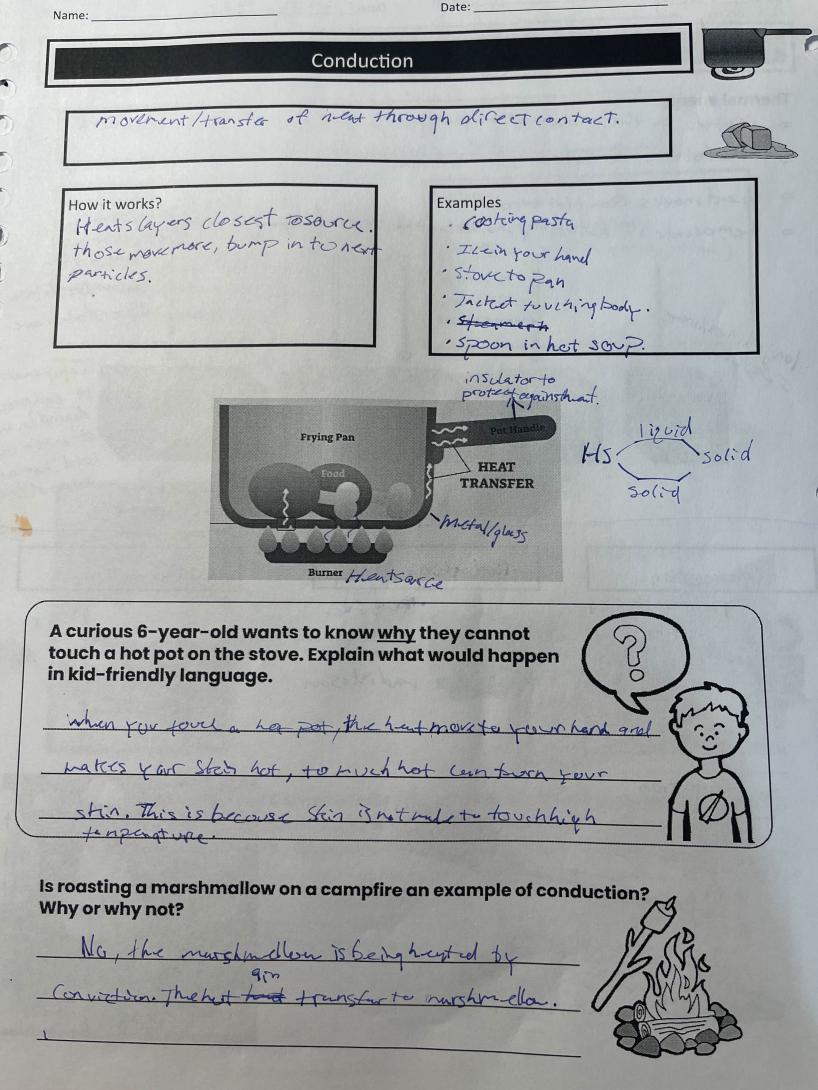1. A curious 6-year-old wants to know why they cannot touch a hot pot on the stove. Explain what would happen in kid-friendly language. 2. Is roasting a marshmallow on a campfire a... 1. A curious 6-year-old wants to know why they cannot touch a hot pot on the stove. Explain what would happen in kid-friendly language. 2. Is roasting a marshmallow on a campfire an example of conduction? Why or why not?

Understand the Problem
The image contains two questions related to heat transfer. The first asks why a child should not touch a hot pot, requiring an explanation in kid-friendly terms. The second asks whether roasting a marshmallow over a campfire is an example of conduction, and requires a justification.
Answer
Touching a hot pot burns due to heat transfer. Roasting marshmallows uses convection, not conduction.
Touching a hot pot can burn your skin because the heat moves from the pot to your hand. Roasting a marshmallow isn't conduction; it's convection, where heat transfers through the air to the marshmallow.
Answer for screen readers
Touching a hot pot can burn your skin because the heat moves from the pot to your hand. Roasting a marshmallow isn't conduction; it's convection, where heat transfers through the air to the marshmallow.
More Information
Conduction is heat transfer through direct contact. Convection involves heat transfer through the movement of fluids (liquids or gases). Radiation is heat transfer through electromagnetic waves.
Tips
A common mistake is confusing conduction with convection or radiation. Conduction requires direct contact, while convection involves the movement of fluids.
Sources
AI-generated content may contain errors. Please verify critical information